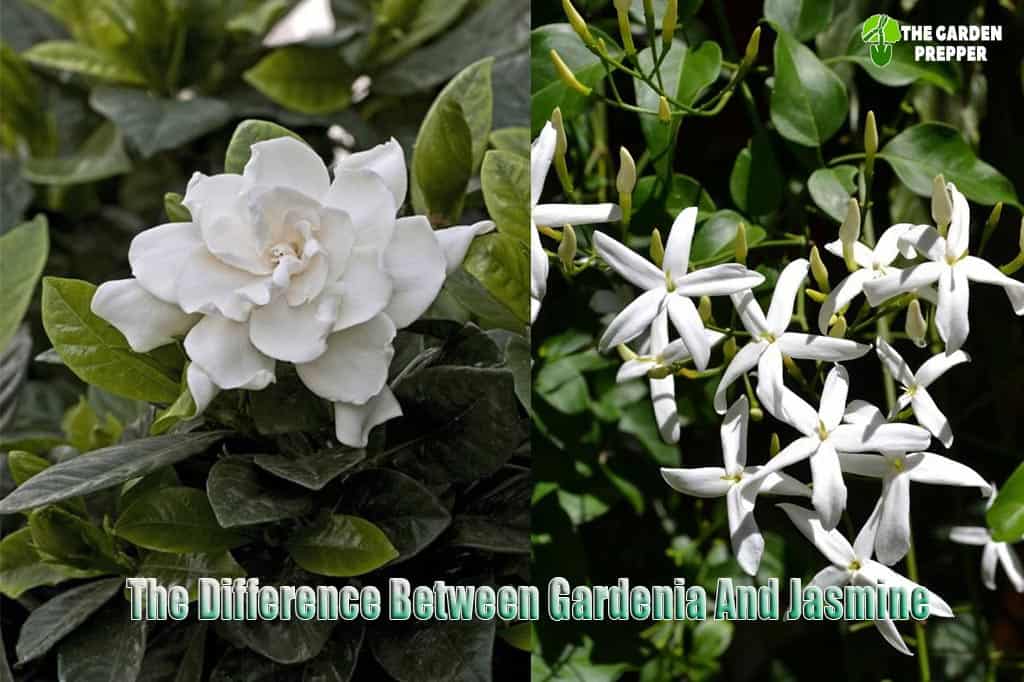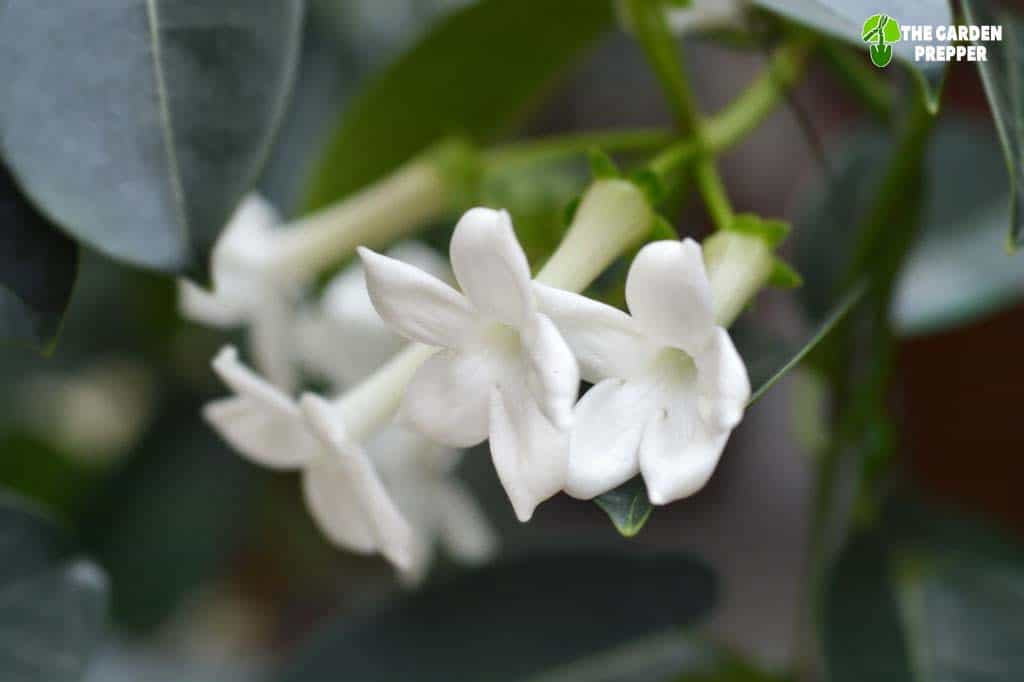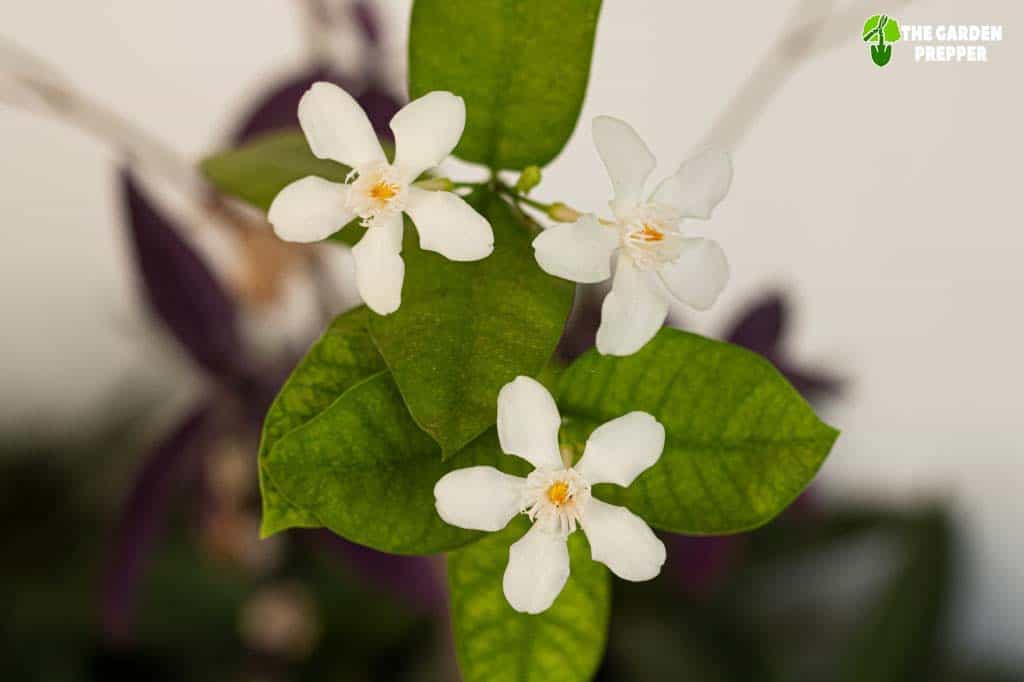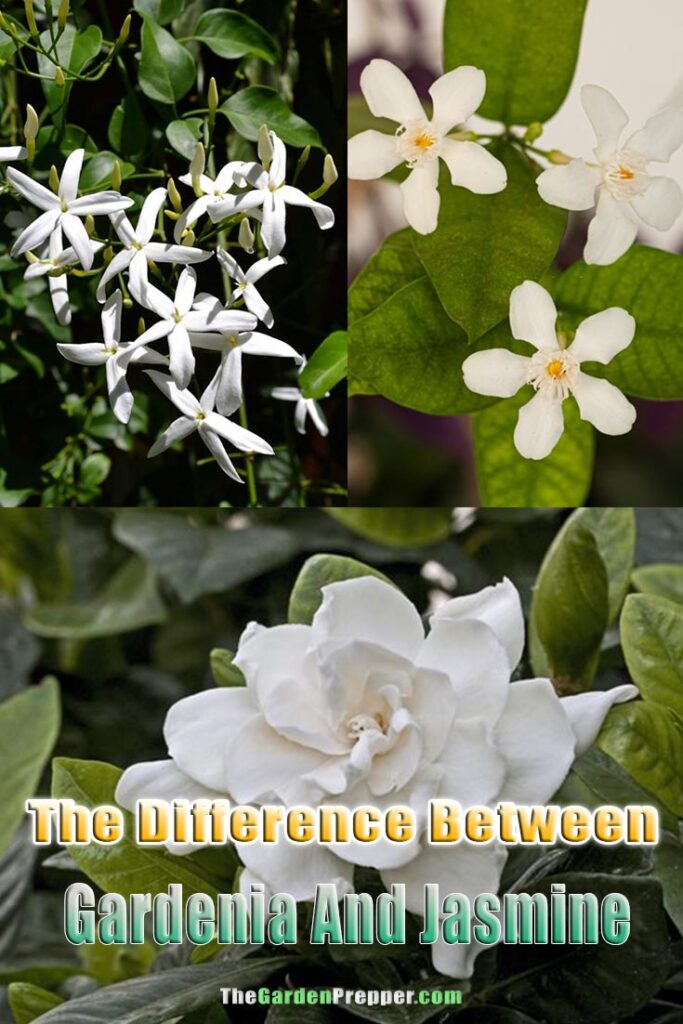At first glance, it may be hard to tell the difference between Gardenia and Jasmine.
They both smell great, the leaves appear to be a tad similar, and basically, it can be tricky to know which is which.
But for folks who have studied these two flowers for quite a while, it’s rather easy to spot the difference. And if you’re looking to plant either one – perhaps both – in your yard, knowing how to tell them apart may be something you’re looking to learn.
So, let’s distinguish these two flowers, what’s uniquely a Gardenia and a Jasmine, and get these beauties growing in your garden. Let’s dive right into it.

Difference Between Gardenia and Jasmine
The difference between Gardenia and Jasmine is hard to tell for the untrained eye. But the more you learn more about these flowers, the easier it will be for you to know how to tell them apart.
Here are key qualities of each in our side by side comparison between these two gorgeous blooms.
1. Flowering Season
Yes, Gardenia and Jasmine don’t bloom at the exact same time.
In fact, Jasmine’s flowering season is longer and can go on until November. Their blooms are also not scattered unlike a Gardenia. There can be about 3 or even more flowers on each branch.
When you look at a Jasmine bloom, it first starts out as a bud in springtime. The bud is round with the calyx split up into about 8 pieces after the flowering season. Moreover, there is a single and a double valve to a Jasmine. The blooms are also tubular with single petals.
On the other hand, Gardenias have a shorter blooming season until August. When it flowers, there is only a single bloom in a branch. You will also notice the sharp bracts prior to blooming, which splits into 5 after it flowers. These flowers are also usually flat, pinwheel-style, and double-petalled unlike Jasmine’s tubular style.
If you happen to see something blooming later in the fall and wondering if it’s a Gardenia or a Jasmine, now you know what this pretty flower is!
2. Stems And Branches
Look closely at the stems of these flowers, and you will discover that they don’t look alike at all.
The color itself is different as Gardenias have a lighter, somewhat gray stem. Jasmine’s stems are darker.
But beyond the color, there is something else to take note of in terms of the difference between the two. Jasmine is more of a vine as it climbs while Gardenia is a shrub. The former is a scrambler, quite like lilac, forsythia, or privet. They also come with a pinnate arrangement where each side of the leaf has several leaflets.
Similar to the growing habits of a periwinkle, dogbane, or frangipani, a Gardenia is a sturdy shrub. They also produce a milky sap, which is toxic.
3. Leaves
Gardenias have glossy, green leaves. They are also quite long at 12 cm. However, Jasmine leaves are shorter, if you put them side by side with a Gardenia’s leaves.
Measuring 3 to 8 cm, Jasmine leaves are stubby and short, so that’s another difference worth noting.
4. Scent
While both flowers have a sweet scent, they don’t smell the same.
Jasmines have a uniquely “Jasmine scent”. By that, we mean a rather heavy or somewhat indolic scent. But it is worth noting that different Jasmine varieties have different fragrances, as well.
As for Gardenias, they don’t smell like Jasmine at all. The scent is leaning more towards a tropical fragrance. We are talking about a cross between jasmine and methyl benzoate. It can even have a root beer-like or wintergreen smell, while some are a bit milky, clove-like, and sometimes sweet like overripe bananas!
Bottom line – if it smells sweet or milky or even a bit minty, it is Gardenia and not Jasmine.
Read more: Can I Prune Gardenias in Winter? When You Should Prune Gardenias
Other Things To Note About Gardenia And Jasmine
You may have heard of the Madagascar Jasmine and at first, you may think it is a type of Jasmine. While the name is rather deceiving, it actually belongs in the Hoya or milkweed family.

Madagascar Jasmine also comes with a tropical smell and leaning more towards a Gardenia smell.
Then, there is the Trachelospermum jasminoides, which again may deceive one and think of it as Jasmine, but it’s not. It is an Apocynaceae with a Jasmine-like appearance. The smell is a tad similar to a Jasmine but still rather unique.

Bottom Line
Gardenia and Jasmine are both popular flowers that bloom in the spring. They are quite delicate, sweet-smelling, and commonly used in weddings and anniversaries. When their oils are extracted, these make excellent fragrances for perfumes and bath essentials.
While they may look the same, there are certainly several differences that set one apart from the other.
So, the next time you see a flower that you assume to be either a Gardenia or a Jasmine, you can refer back to these features we have just enumerated for you.
While both flowers may seem alike in a few ways – both smell sweet, flowers are delicate, and the blooming season begins in relatively the same months – there are differences between these two that make them unique in so many ways!

Gardenias was our wedding flowers. We now live in Brazil and trying to convince a Brazilian that a gardenia is not a jasmine. It gets frustrating at times. Thanks for the article it really cleared up a lot.